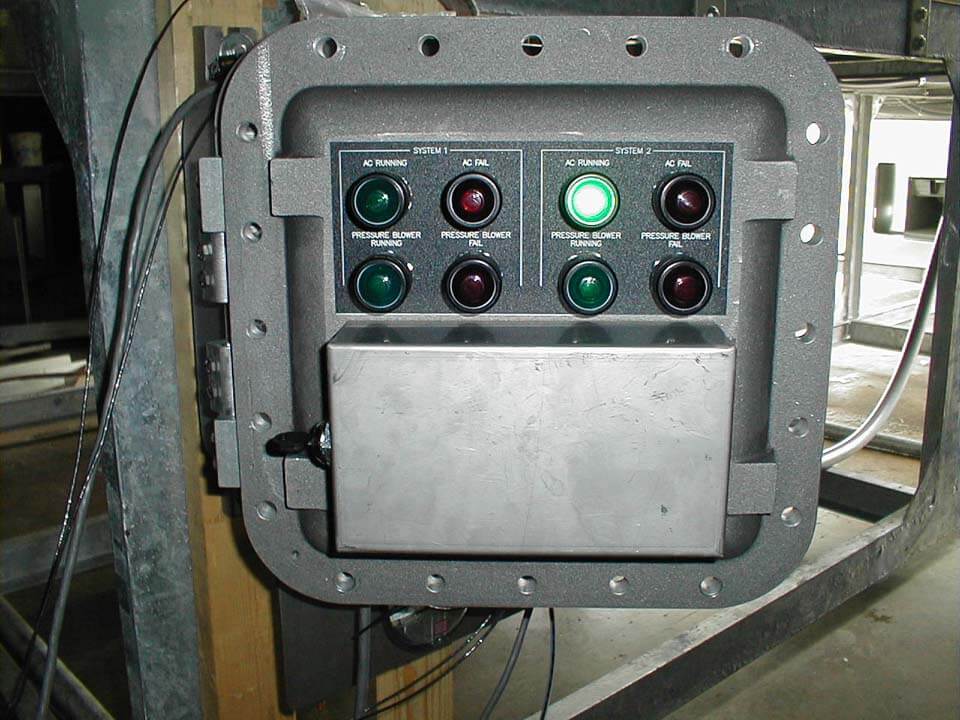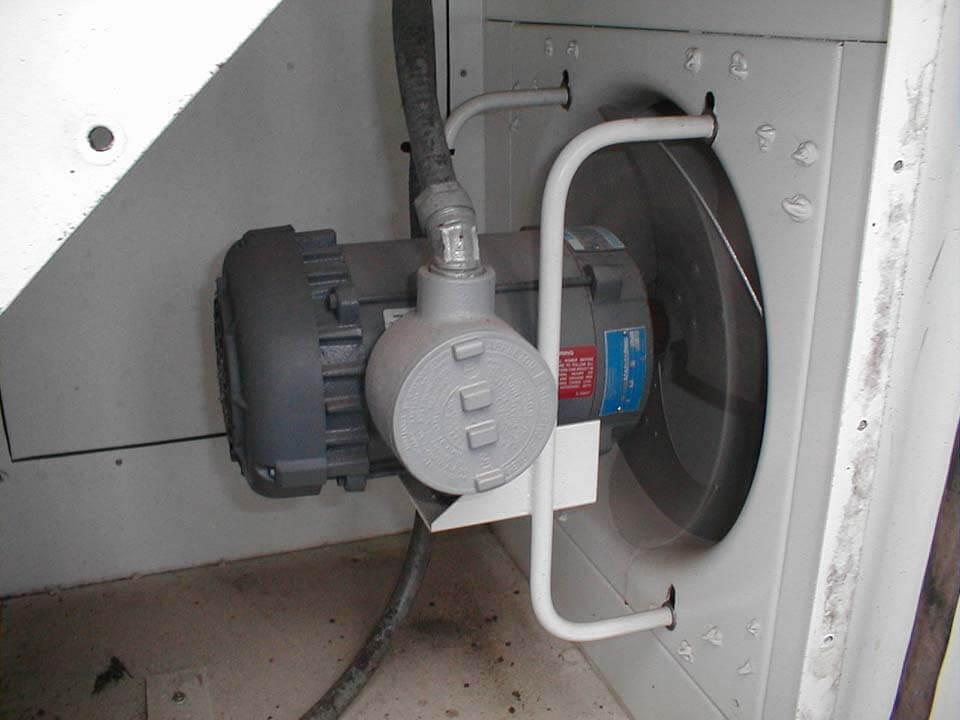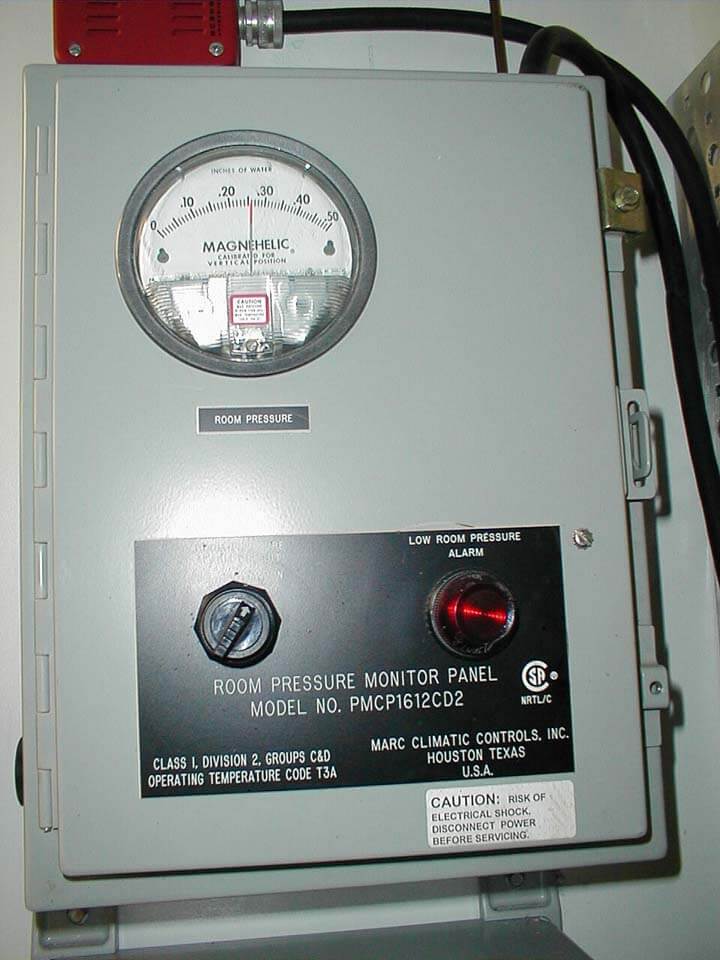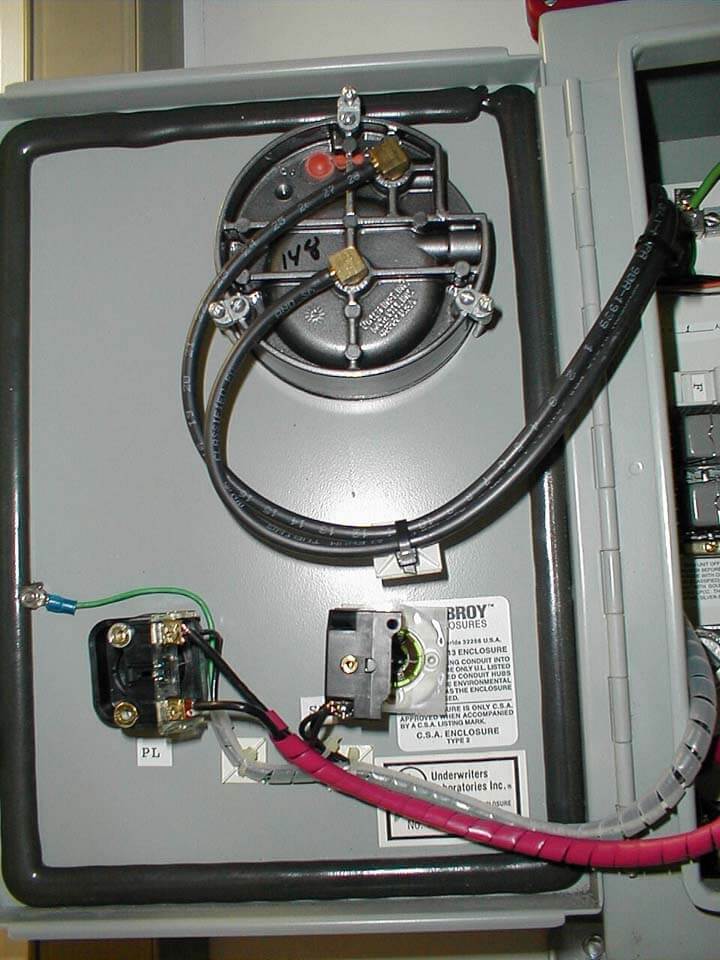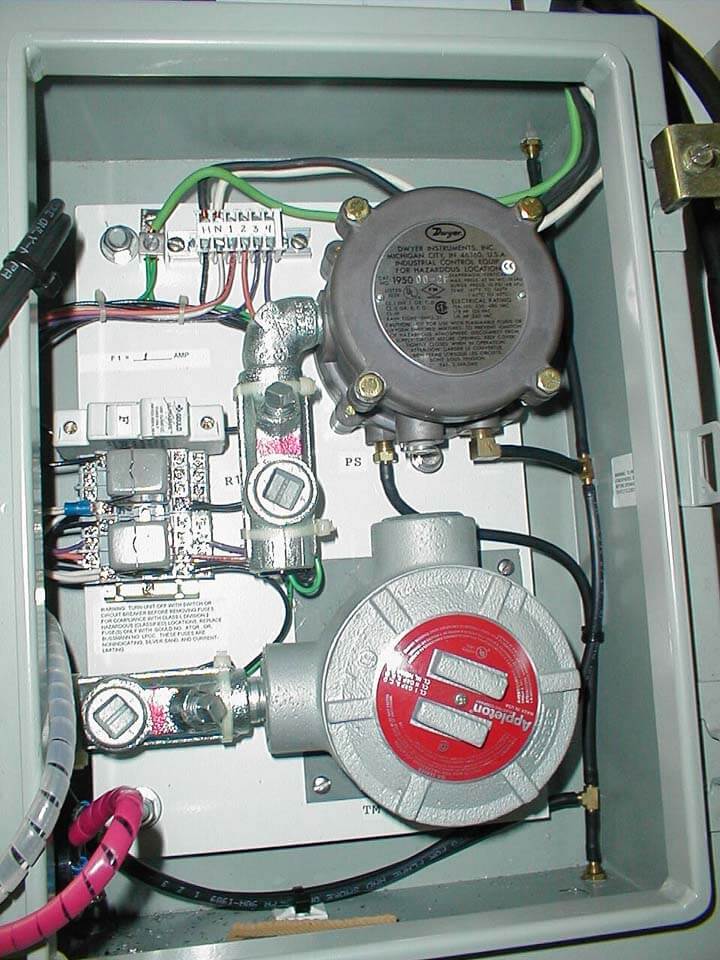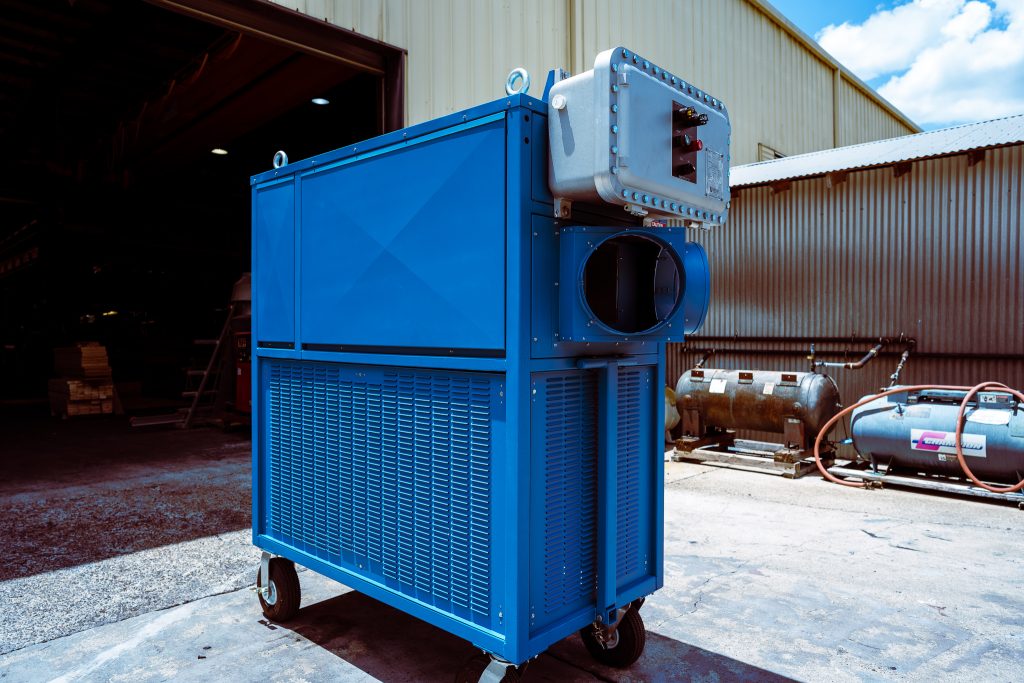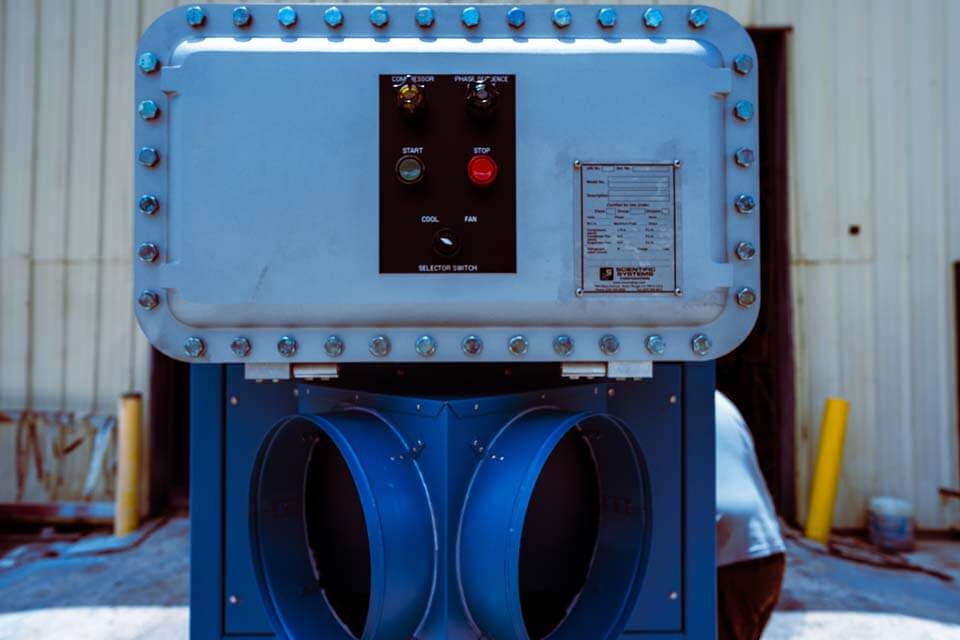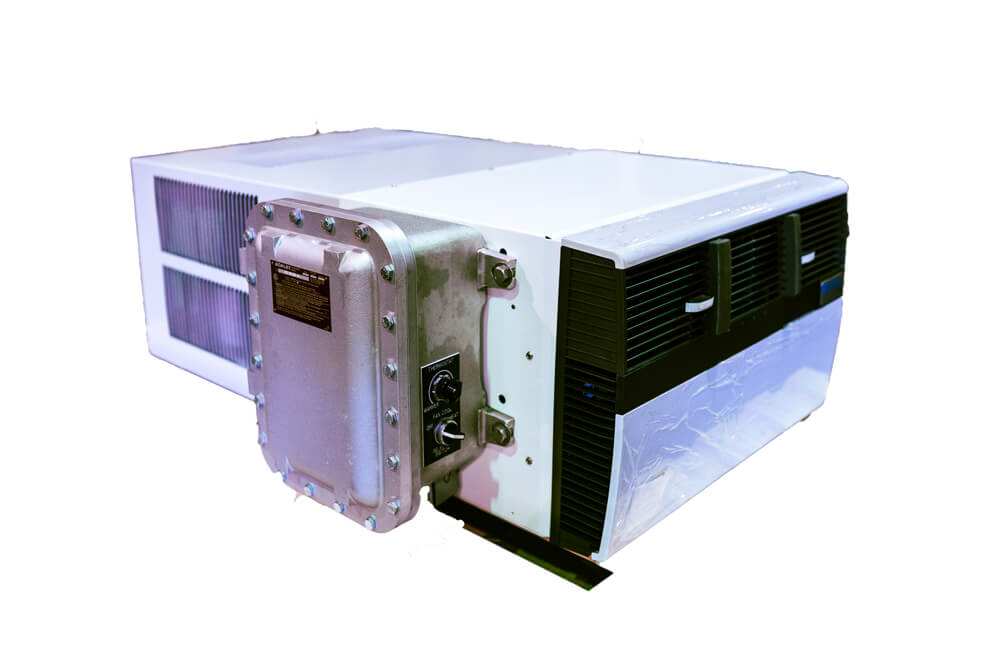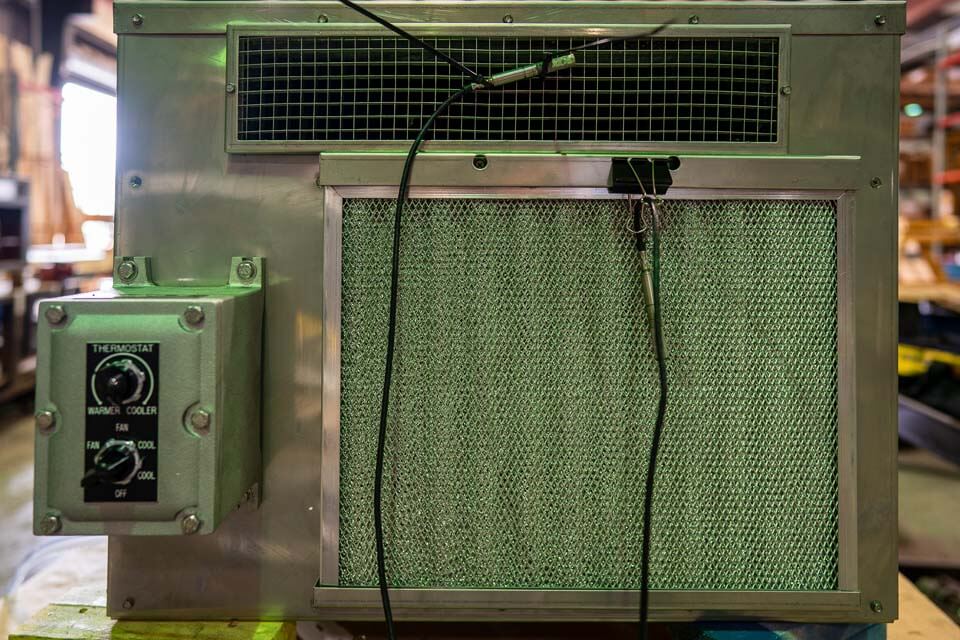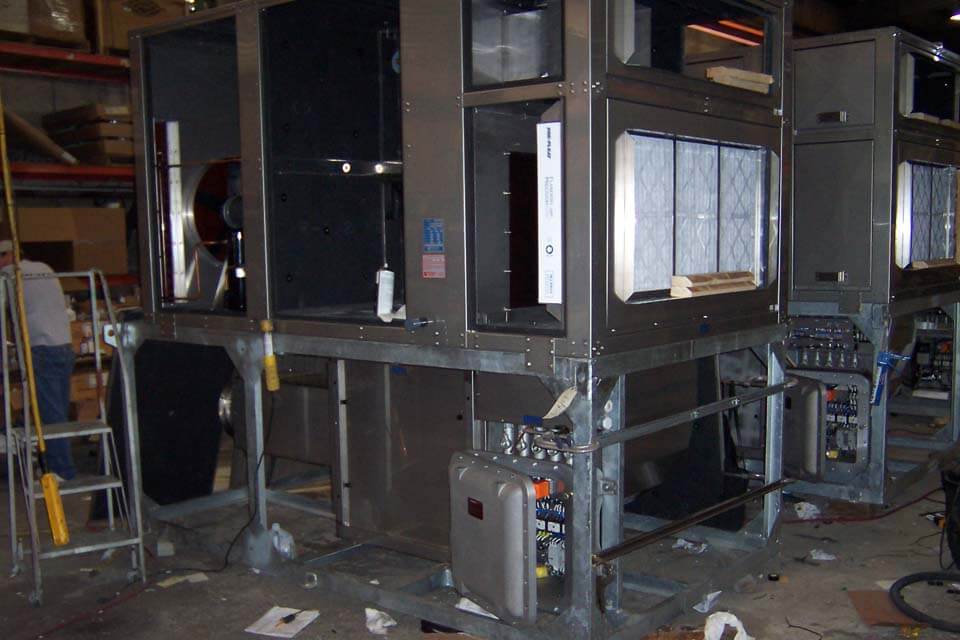Explosion-Proof Guidelines & Nomenclature

Scientific Systems has been building HVAC, pressurization, and chiller units for hazardous (classified) areas since 1965, and is the oldest and manufacturer in the industry. Because we manufacture the units, we will be here to assist with any questions you have post-installation.
“Explosion Proof” is only a generic term. When applied to equipment it does not by itself assure that the item is safe to use in a hazardous location. Required are additional code designations as issued by agencies in the United States, Canada, Europe and other parts of the world.
In North America and many other countries explosion-proof electrical equipment must conform with NFPA 70 National Electrical Code (NEC). Western Europe and some other countries work with CENELEC standards or accept equipment certified under either system.
An “Explosion Proof” designation under the NEC must include a “Class”, a “Group” and a “Division”. Class I refers to gases, Class II to dusts, and Class III to fibers and flyings. Groups relate to the ignitability of the material. Two Divisions are defined as outlined below.
Explosion-Proof Guidelines – Classes
A Class is specified with a Roman numeral I, II, or III:
Class I – Gases
Locations where flammable gases or vapors are, or may be, present in the air in quantities sufficient to produce explosive or ignitable mixtures.
Class II – Dusts
Locations where the presence of combustible dust present a fire or explosion hazard.
Class III – Fibers and Flyings
Locations where easily ignitable fibers or flyings are present but not likely to be suspended in the air in quantities sufficient to produce ignitable mixtures.
Explosion-Proof Guidelines – Groups
Groups are defined by letters. Groups A, B, C and D fall under Class I. Group A is the most easily ignited, Group D the least. Groups E, F, and G fall under Class II. (See reverse side of bulletin for partial classification of materials by groups. For more complete summary refer to NFPA 497M “Classification of Gases, Vapors and Dusts for Electrical Equipment in Hazardous (Classified) Locations”.
Explosion-Proof Guidelines – Divisions
Divisions are defined with numeral 1 or 2.
Division 1
The hazardous concentration of flammable gases, vapors or suspended combustible dusts are present continuously, intermittently or periodically under normal operating conditions.
Division 2
Volatile, flammable liquids or flammable gases present, but normally confined within closed containers or systems from which they can escape only under abnormal operating or fault conditions. Combustible dusts not normally in suspension nor likely to be thrown into suspension.
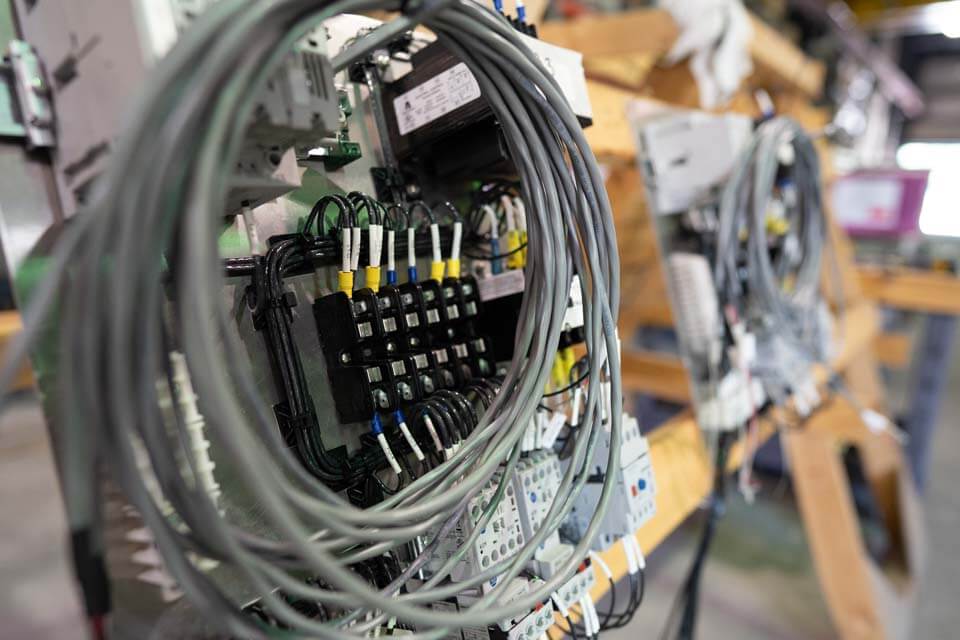
Learn more about CSA Hazardous Location Certifications
Classification of Gases, Vapors and Dust
Group A
- acetylene
Group B
- formaldehyde (Gas)
- hydrogen
Group C
- acetaldehyde
- allyl alcohol
- butyl mercaptan
- n-butyraldehyde
- carbon monoxide
- crotonaldehyde
- dicyclopentadiene diethyl ether
- diethyl amine
- 1, 1-dimethyl hydrazine
- di-isopropyl amine
- dimethylamine
- 1, 4-dioxane
- di-n-propylamine
- epichlorohydrin ethylene
- ethyl mercaptan
- hydrogen cyanide
- hydrogen selenide
- hydrogen sulfide
- isobutyraldehyde
- methylacetylene
- methyl ether
- methyl mercaptan
- monomethyl hydrazine
- morpholine
- nitroethane
- nitromethane
- 2-nitropropane
- propionaldehyde
- n-propyl ether
- tetrahydrofuran
- triethylamine
- valeraldehyde
Group D
- acetic acid (glacial)
- acetone
- acetonitrile
- acrylonitrile
- ammonia
- myl acetate
- sec-amyl acetate
- benzene
- butanea
- butanol (butyl alcohol)
- 2-butanol
- utyl acetate
- sec-butyl acetate
- butylamine
- chlorobenzene
- cyclohexane
- cyclohexene
- cyclopropane
- 1, 1-dichloroethane
- 1, 2-dichloroethylene
- 1, 3-dichloropropene
- di-isobutylene ethane
- ethanol (ethyl alcohol)
- ethyl acetate
- ethyl benzene
- ethyl chloride
- gasoline
- heptane
- heptene
- hexane
- hexenes
- isoamyl
- acetate isoprene
- isopropyl ether
- LPG (liquified pet gas)
- methane (natural gas)
- methanol (methyl alcohol)
- methyl acrylate
- methyl amine
- methyl cyclohexane
- methyl ethyl ketone
- methyl isobutyl ketone
- methyl isocyanate
- methyl methacrylate
- 2-methyl-1 propanol (isobutyl alcohol)
- naphtha (petroleum)
- nonane
- nonene
- octane
- octene
- pentane
- 1-pentanol (amyl alcohol)
- 2-pentanone
- 1-pentene
- propane
- 1-propanol (propyl alcohol)
- 2-propanol (isopropyl alcohol)
- propylene
- styrene
- toluene
- turpentine
- vinyl chloride
- xylenes
Group E
Atmospheres with combustible metal dusts regardless of resistivity, or other combustible dusts of similar hazardous characteristics having resistivity of <105 ohm-cm.
Group F
Atmospheres with carbon black, charcoal, coke or coke dusts which have more than 8% total volatile material(1) or atmospheres containing these dusts sensitized by other materials so that they present an explosion hazard, and having resistivity >102 ohm-cm but equal to or <108 ohm-centimeter.
(1) Carbon Black per ASTM D 1620; charcoal coke and coke dust per ASTM D271.
Group F
Atmospheres with combustible dusts with resistivity of 105 ohm- centimeter or greater.
